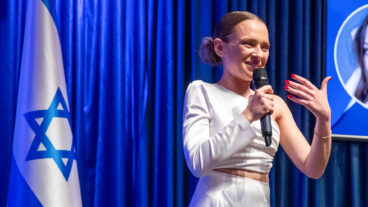Good vibrato is hard to judge subjectively: Noam Amir, senior lecturer at the Sackler Faculty of Medicine, Tel Aviv University.Singing lessons could come courtesy of your PC after news that Israeli researchers have successfully managed to train a computer not only to rate the pitch of a singer’s voice, but also to coach them to improve their technique.
Until now, vibrato – the pulsating change of pitch in a singer’s voice that gives expression to songs – could only be judged subjectively by voice experts. The researchers from Tel Aviv University, however, have created a program that rates the vibrato quality of a singer’s voice, and then helps them improve it with an application based on biofeedback.
The development is already creating a stir. Introduced at an international competition in Istanbul, it won first prize at the International Cultural and Academic Meeting of Engineering Students.
Vibrato is an essential element in how a singer expresses a song. It is created by a steady pulsating change of pitch, and is used extensively by both classical opera singers and pop stars.
The TAU application, which was developed by a team of researchers led by Noam Amir, a senior lecturer from the Department of Communication Disorders at the Sackler Faculty of Medicine, Tel Aviv University, can teach singers how to mimic the vibrato qualities most attractive to the human ear.
Learning to control your vibrato
Amir began exploring the qualities of vibrato three years ago when he and his team decided to look for an objective, numerical assessment of the musical effect. New vocal students usually don’t have good control of their vibrato, explains Amir. “Their vibrato is erratic and hard to judge subjectively, and it’s hard to find a precise measure for this. We wanted to find a way to emulate a human expert in a computer program.”
Amir’s team input many recordings by students singing vibrato into a computer and then had their vibrato judged by human teachers. Using hundreds of vocal students and expert judges, the team was able to use mathematical measurements to correlate vibrato styles to their quality, as judged by the teachers.
In the wake of this, the computer was able to rate the vibrato quality of new voices on its own, producing ratings similar to those given by the expert vocal teachers. In effect, the computer “learned” how to judge the quality of an individual singer’s vibrato. The researchers then added a biofeedback loop and a monitor so that singers could see and augment their vibrato in real time.
Mastering vibrato, however, is no instant guarantee of success. “Vibrato is just one aspect of a singer’s impact,” admits Amir, an expert in the way that emotions are expressed in speech. “Singers need to arouse an emotional response, and that is a complicated task.”
Beyond the singing world, there are other applications for this research, according to Amir, who believes that it could be of use in automated call centers, where callers communicate with computers. He hopes to be able to teach computers how to recognize a range of different emotions, such as anger and nervousness, so that a live receptionist can jump in when a caller becomes upset with the machine.












